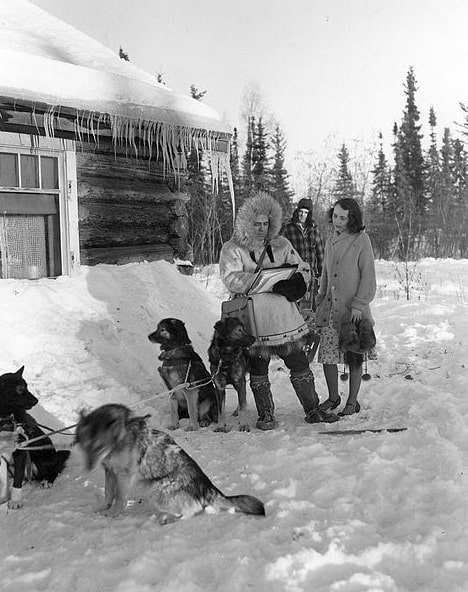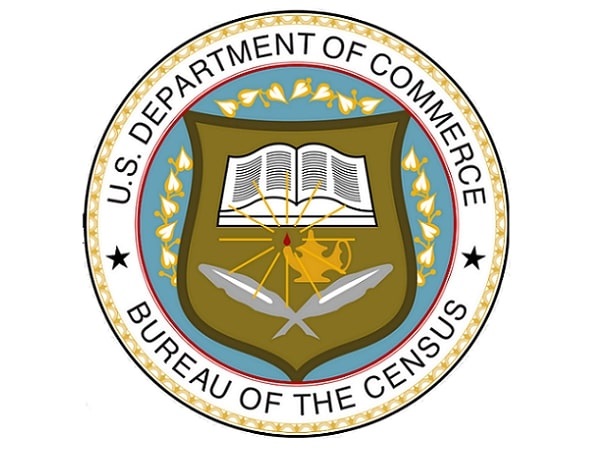Introduction: In this article, Jessica Edwards gives tips for finding and using census records in your genealogy research. Jessica has had a lifelong interest in her family’s history – especially on her father’s side, which goes back to the first settlers in Pennsylvania, Jamestown and New England – and has documented and added more than 21,000 people to her family tree!
When the general public thinks of censuses, they picture a guy holding a clipboard and asking all sorts of personal questions. But when genealogists think of censuses, they see storehouses full of family history information. If you learn how to read each census, you can learn quite a bit about your ancestors.

Introduction
A census is an original record that is a list of questions the government has come up with so that they know more about the people living in a certain area. We look to censuses as the most likely sources that will give an accurate account of what took place. Original records may have facts stated inaccurately for a variety of reasons, but are more likely to be reliable than information that was recorded later.
Census schedules are full of information useful to family historians. Since 1850, they have included the name of each person residing in a household, with age, sex, color, occupation, and state or country of birth. And, starting in 1880, censuses included the person’s relationship to the head of household and the state/country where each person’s father/mother was born. Other information may include such tidbits as number of years married, value of personal property and real estate, ability to read and write, unemployment during the year, whether naturalized or an applicant for citizenship with “first papers,” years of residence in the U.S., and presence of a mental/physical disability/chronic illness.
Types of Censuses in the United States
Census data and questionnaires are census records, and data specific to individual respondents is not available to the public until 72 years after a given census was taken. Every census up to 1940 is currently available (the 1950 census will be available next year), released by the National Archives and Records Administration, the official keeper of archived federal census records.
Broadly speaking, there are five types of censuses:
- State: Varying periods between censuses, variety of information.
- Federal: The United States census is a decennial census (every ten years) mandated by the U.S. Constitution and is used to allocate congressional seats, electoral votes, and government program funding, and is performed by the U.S. Census Bureau. GenealogyBank has every U.S. census, from 1790 to 1940: S. Federal Census Records.
- Mortality: Mortality schedules are available for the federal census years of 1850, 1860, 1870, and 1880. In the state census, mortality schedules were generally recorded for the years of 1855, 1865, and 1875. These schedules may be the only record of death for some individuals, because many states did not require recording of deaths until the late nineteenth century. Mortality schedules record deaths in the year preceding the taking of the census. For example, the 1860 mortality schedules include persons who died between 1 June 1859 and 31 May 1860. For each person, the following information is listed: name, age, sex, marital status if married or widowed, state or country of birth, month of death, occupation, cause of death, and the length of the final illness. The surviving 1890 federal census also includes the veterans’ mortality schedules.
- Veteran: FamilySearch offers this excellent, free resource: United States Census Veterans Schedules.
- Slave: FamilySearch offers this excellent, free resource: United States Census Slave Schedules.
History of the U.S. Census
Censuses had been taken prior to the Constitution’s ratification. For example: in the early 1600s, a census was taken in Virginia, and people were counted in nearly all of the British colonies that became the United States.
Through the years, the country’s needs and interests became more complex, which meant that there had to be statistics to help people understand what was happening and have a basis for planning. In 1810 the first inquiry on manufactures, quantity and value of products occurred; in 1840 inquiries on fisheries were added; and in 1850, the census included inquiries on social issues, such as taxation, churches, pauperism and crime.
For the first six censuses (1790-1840) enumerators recorded only the names of the heads of household and did a general demographic accounting of the remaining members of the household, so the only names that appear are usually the males of the family.
Beginning in 1850, all members of the household were named by the enumerator. The first slave schedules were also completed in 1850, with the second (and last) in 1860. Censuses of the late 19th century also included agricultural and industrial schedules to gauge the productivity of the nation’s economy.
The first nine censuses (1790-1870) were not managed by the Executive Branch but by the Judicial Branch, so the United States federal court districts assigned U.S. marshals, who hired assistant marshals to conduct the actual enumeration.
The first census was taken 2 August 1790. The federal census records for the first census are missing for five states: Delaware, Georgia, Kentucky, New Jersey, and Virginia, because they were destroyed sometime between the time of the census-taking and 1830.
The 17th census was taken on 1 April 1950 and will be available in 2022 because of a 72-year privacy law.
The concept of a census, or counting of residents, is an ancient one dating to Biblical times. The first census ever taken in North America was in 1576, 200 years before America gained its independence from the British. King Philip II, then the king of Spain, sent American Indians through what is now Mexico with a list of 100 questions. The Indians spoke no Spanish, so they recorded the answers in hieroglyphs (pictures) and made maps the same way.
Since 1790, national census information has been taken every 10 years (in years ending in zero) because it is mandated by the U.S. Constitution and necessary to determining each area’s representation in the U.S. House of Representatives. In 1790, George Washington signed the act into law.
Interesting Facts about Censuses
- The word “census” is derived from the Latin word “censor,” which was the title of the Roman official in charge of civil registration, taxation, public works, and public morality.
- The inhabitants of early Babylonia, Egypt, and China were regularly counted, or enumerated.
- When taking the first census, workers provided their own paper, and information was submitted on paper ranging from four inches to three feet.
- Enumerators (census takers) write down the responses that are given to them; they are not authorized to ask for any kind of proof, such as birth, marriage, or property ownership records.
- In 1920, enumerators were paid between one and four cents per person, depending on the urban or rural setting of the district to be counted.
Good Census Tip: When you make a new find of your ancestor in the U.S. census, a good rule of thumb is to copy that page AND a few pages before and after it (making sure you can see the page numbers). As you learn more about the history of your family, go back and look at the census records you previously copied for your ancestors and note the surrounding households, because often you will see a new connection.
Related Articles:
